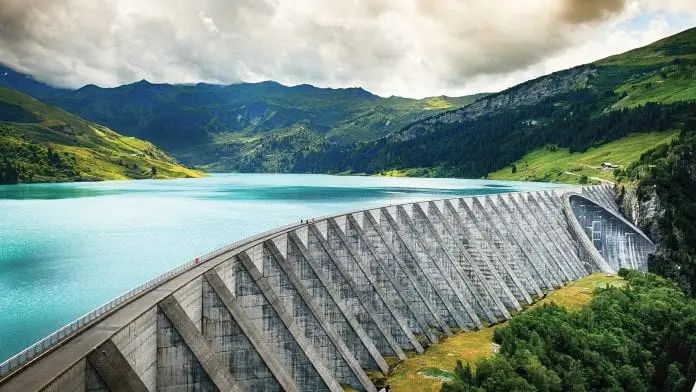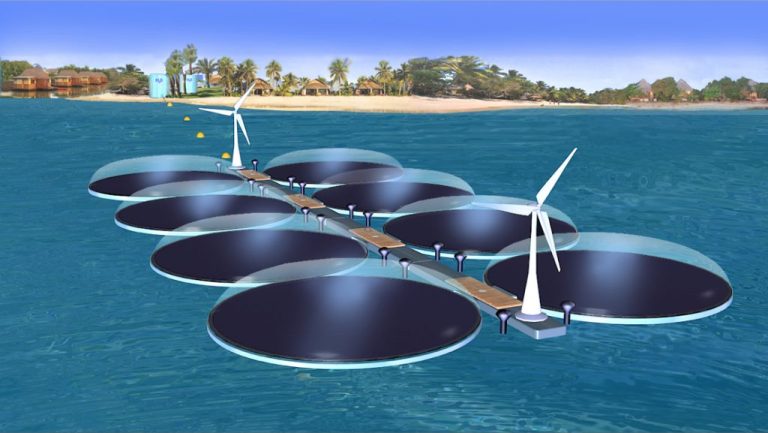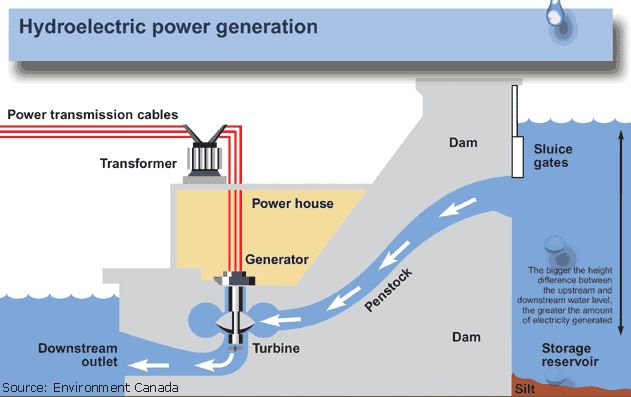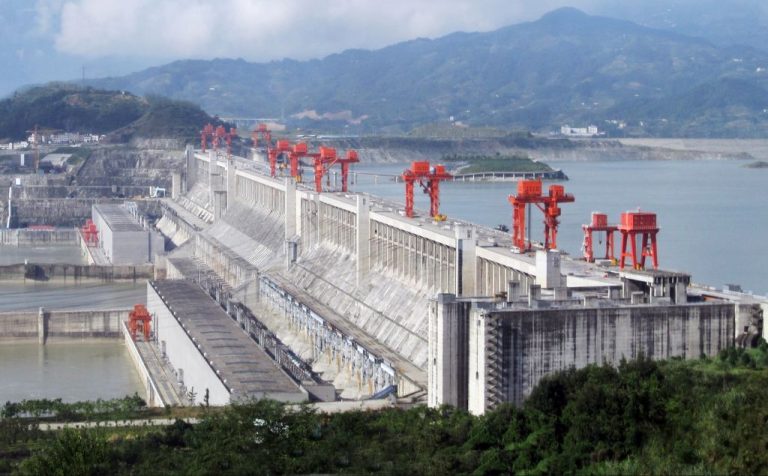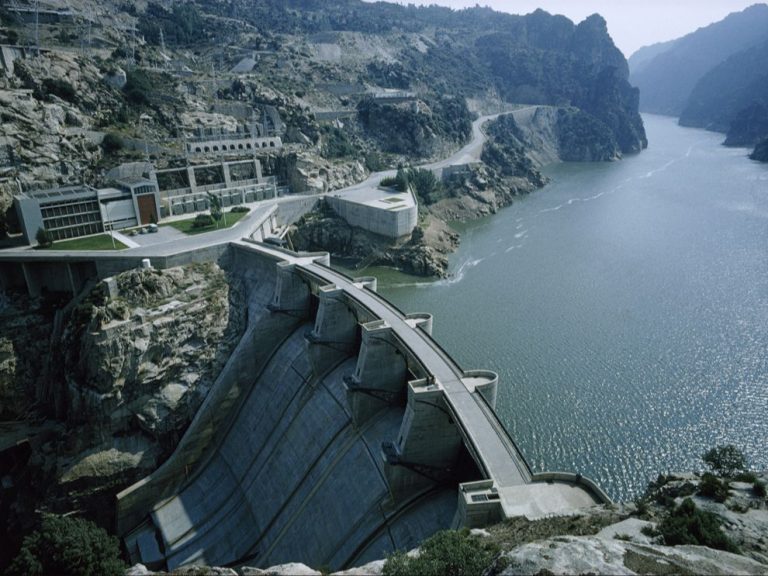How Efficient Are Hydro Batteries?
What are hydro batteries?
Hydro batteries, also known as pumped hydro storage, are a type of large-scale energy storage system that stores energy in the form of gravitational potential energy of water (Wikipedia, 2022). They work by using excess electricity to pump water from a lower reservoir to an upper reservoir. When electricity demand is high, the stored water is released from the upper reservoir through a turbine to generate electricity.
There are two main types of hydro batteries: conventional pumped hydro storage and kinetic hydro storage. Conventional pumped hydro storage uses the height difference between two natural bodies of water or artificial reservoirs to store energy. Kinetic hydro storage uses an above-ground closed loop system where kinetic energy is stored by accelerating a mass, like a flywheel (GE Renewable Energy, 2022).
The key components of a pumped hydro storage system are an upper and lower reservoir, turbine/generator, pump, and water conveyance facilities like tunnels and pipelines. During off-peak hours when electricity prices are low, water is pumped from the lower to the upper reservoir. During periods of high electricity demand, water is released from the upper reservoir through a turbine to generate electricity.
Hydro batteries provide a way to store large amounts of energy and offer reliable and flexible electricity storage. They currently account for over 90% of utility-scale energy storage worldwide (Wikipedia, 2022).
Benefits of hydro batteries
Hydro batteries, also known as pumped-storage hydroelectricity, provide many advantages for energy storage and grid stability compared to alternatives like lithium-ion batteries. Hydro batteries have an extremely high energy storage capacity and can store gigawatt-hours of electricity, compared to megawatt-hours for lithium-ion 1. They are also very cost-effective for large scale, long-duration energy storage, with costs as low as $100/kWh compared to $300-600/kWh for lithium-ion batteries1. The lifespan of hydro batteries can be over 50 years with proper maintenance, much longer than the typical 5-15 year lifespan of lithium-ion batteries. This long lifespan also contributes to the cost-effectiveness of hydro storage. Overall, hydro batteries provide unmatched capacity, lifespan, and cost advantages for grid-scale energy storage.
Efficiency of hydro batteries
Hydro batteries, also known as pumped hydro storage, can achieve roundtrip efficiency rates of 70-80%, according to this source. This means that 70-80% of the energy put into the battery can be retrieved for later use. In comparison, lithium-ion batteries have roundtrip efficiency rates of 85-95%, according to this source. So lithium-ion batteries are more efficient at storing and discharging energy.
The main factor limiting the efficiency of hydro batteries is conversion losses. When water flows through the turbines to generate electricity, there are friction losses that reduce efficiency. There are also electrical transmission losses as the energy travels from the pumped hydro site to where it is needed. Overall, the roundtrip efficiency is lowered by theseconversion steps.
Hydro battery storage capacity
Pumped hydro storage (PHS) has a very large energy storage potential compared to other storage technologies like batteries. According to the International Hydropower Association, the total storage volume of existing PHS plants worldwide is estimated to be around 9,000 GWh as of 2018 (IEA). In comparison, global grid-connected battery storage capacity is much lower, at around 7 GWh.
Some examples of large-scale PHS plants demonstrate the immense storage capacity:
- The Bath County Pumped Storage Station in Virginia, USA has a capacity of 24 GWh.
- The Guangzhou Pumped Storage Power Station in China has 20 GWh capacity.
- The Grand’Maison Dam in Switzerland stores 18 GWh.
With many large-scale projects under development, global PHS storage capacity is expected to grow substantially in the coming years. The storage potential of this mature “water battery” technology far exceeds other options currently available.
Hydro Battery Cost
The capital costs of hydro batteries, also known as pumped hydro storage, can range from $1,500 to $3,500 per kilowatt-hour (kWh) of storage capacity according to this analysis. This is significantly higher than the capital costs of lithium-ion batteries, which have fallen to around $200/kWh as of 2017 according to this fact sheet.
However, when looking at levelized costs over the lifespan of the storage system, pumped hydro storage can be more cost effective. Pumped hydro facilities have lifespans of 50 years or more, compared to around 10-15 years for lithium-ion batteries. This means the high upfront capital costs can be spread over a longer period of time, bringing the levelized costs down. One industry study found the levelized costs of pumped hydro storage to be competitive with lithium-ion batteries in many scenarios.
Hydro Battery Lifespan
Hydro batteries, also known as pumped hydro storage, can last over 50 years with proper maintenance according to research from Science Focus. This is significantly longer than alternatives like lithium-ion batteries which typically last 5-15 years according to PV Magazine. The reason hydro batteries last so long is because their storage medium is water rather than chemicals. The water can be recycled indefinitely whereas chemicals in batteries like lithium-ion degrade over time.
Hydro power plants with dams that have operated for over 100 years demonstrate the longevity of pumped hydro storage. With proper maintenance of pumps and turbines, the water portion of the system can continue functioning for many decades. This long lifespan makes hydro batteries a reliable and durable energy storage solution.
Hydro Battery Sustainability
Hydro batteries, also known as pumped hydro storage, offer significant environmental advantages over traditional chemical batteries like lithium-ion. Pumped hydro storage facilities use reversible turbines to store energy in the form of gravitational potential energy of water. During periods of low electricity demand, excess generation capacity is used to pump water from a lower reservoir to an upper reservoir. When electricity demand is high, water is released from the upper reservoir through a turbine to generate electricity (Source).
Unlike batteries that use toxic chemicals, pumped hydro storage relies only on water and gravity, making it a clean and sustainable form of energy storage. Researchers have found pumped hydro storage to have lower lifecycle greenhouse gas emissions compared to other storage technologies (Source). The facilities also have long lifespans of 50-60 years with minimal degradation over time.
However, pumped hydro storage does have some limitations. Facilities require specific topography and geographic locations with access to water and reservoirs at different elevations. This restricts where pumped hydro can be built and limits widespread adoption. There are also concerns around habitat destruction and disruption of water systems from dam construction (Source). Careful siting and environmental impact assessments are necessary.
Hydro Battery Challenges
Hydro batteries, also known as pumped hydro storage, face some key challenges and limitations. One major limitation is geography – pumped hydro facilities require particular topography and access to water reservoirs at different elevations, which restricts where they can be built (https://www.gao.gov/products/gao-23-105583). Constructing the upper and lower reservoirs can also be very capital intensive, requiring substantial upfront investment and long payback periods. According to one source, “the high capital costs to construct a pumped hydro energy storage (PHES) facility present the greatest challenge to deployment of this storage technology” (https://www.fuergy.com/blog/hydroelectricity-major-challenges-and-issues).
Another challenge for pumped hydro storage is that roundtrip efficiency can degrade over decades of operation. One study found that “the efficiency of reversible pump-turbines degrades over time—on the order of 1% loss per year—primarily due to wear and cavitation damage” (https://www.nature.com/articles/s43246-023-00367-2). This can reduce the long-term value proposition of the battery. There are also sustainability concerns, as decaying vegetation in reservoirs can produce methane emissions.
Future outlook
The future looks bright for hydro batteries as a form of energy storage. According to the International Energy Agency, global energy storage installations are expected to grow from 9 GW/17 GWh in 2021 to 305 GW/586 GWh by 2030. Pumped storage hydropower is projected to provide the bulk of growth, with 93 GW of new pumped storage capacity additions expected by 2030 (IEA).
Several developments are expected to improve the efficiency and lower the costs of hydro batteries in the coming years. Advances in variable speed technology will allow pumped storage plants to operate more flexibly across a wider range of outputs. New ternary pumped storage designs can achieve round-trip efficiencies exceeding 85%. Optimization of plant design and increasing plant size can also improve efficiency (IEA).
In the longer term, next generation designs like seawater pumped storage, underground pumped hydro, and gravitational energy storage using cranes and falling weights may provide further efficiency improvements and cost reductions for grid-scale hydro energy storage.
Conclusion
In summary, hydro batteries can provide an efficient form of energy storage with high capacity and long lifespan if implemented properly. The key advantages of hydro batteries include:
- High round-trip efficiency of 70-80%, on par with lithium-ion batteries
- Ability to store large amounts of energy, often 10+ GWh capacity
- Long lifespan of 50+ years with minimal degradation
- Lower environmental impact than alternatives like lithium-ion
However, hydro batteries also face challenges around finding suitable geography, high upfront costs, and maintaining reliability and efficiency over decades of operation. Overall, they represent one of the most promising large-scale energy storage solutions available today, offering an efficient and sustainable option for supporting renewable energy growth.

